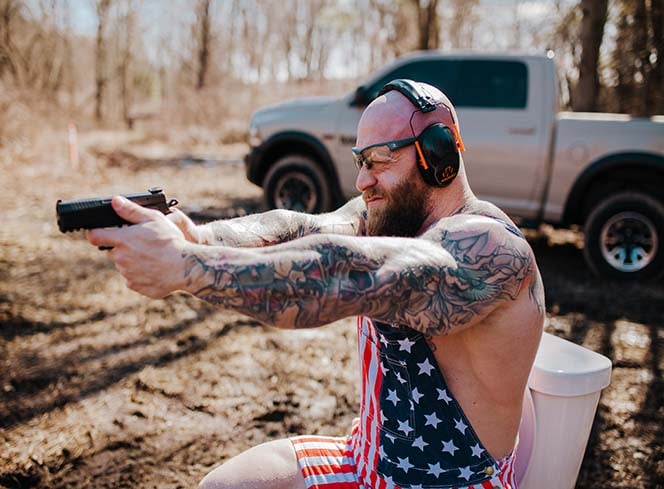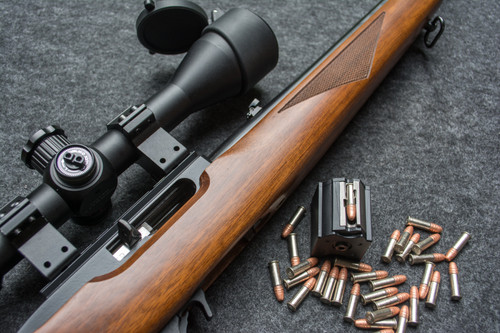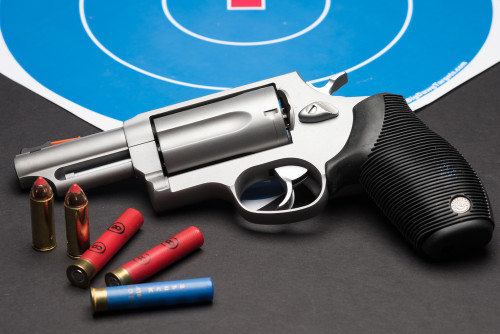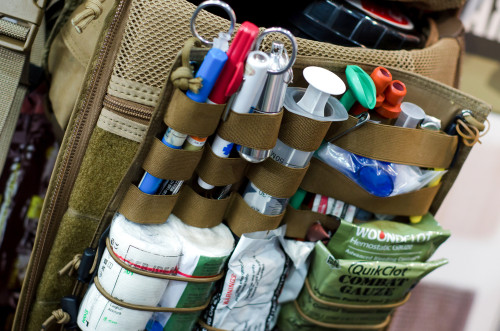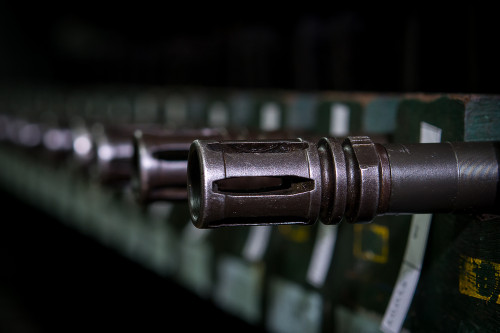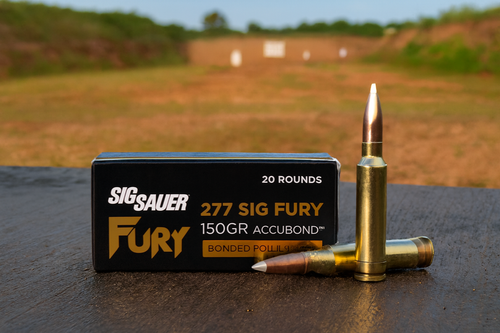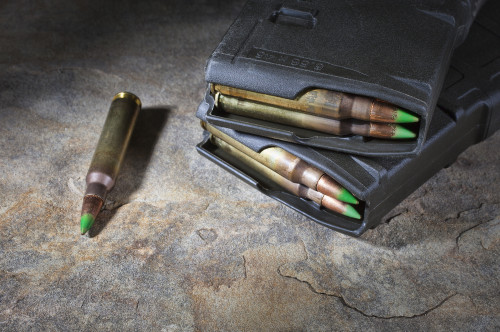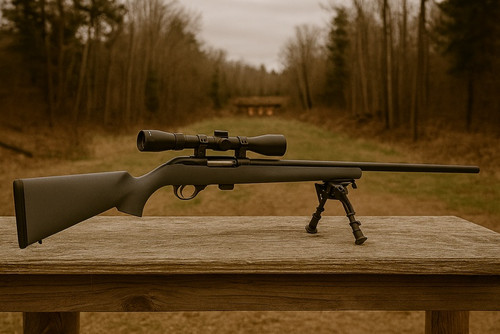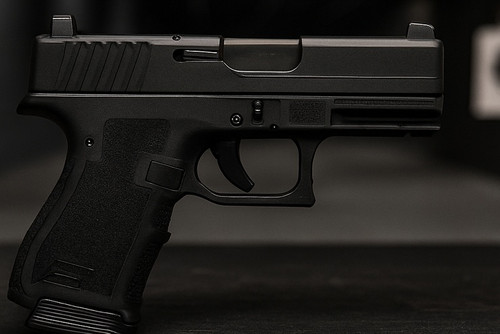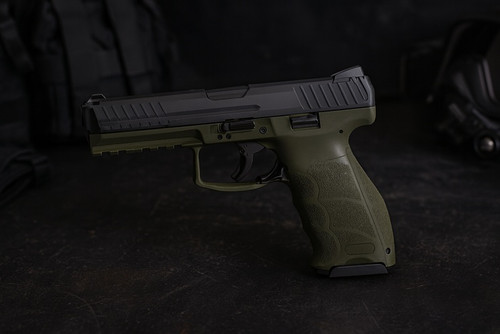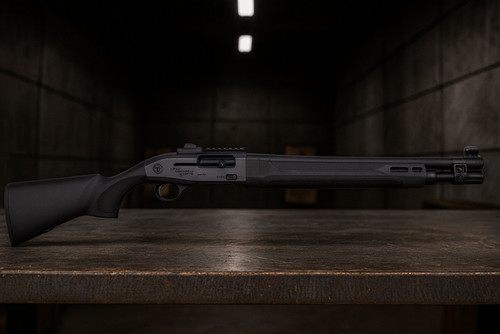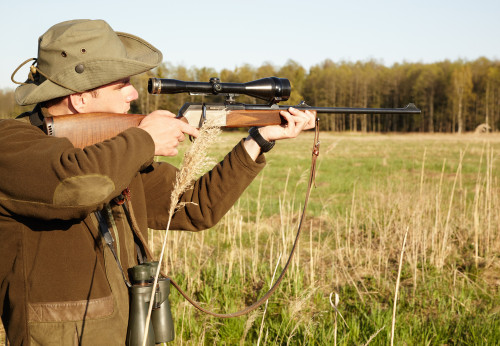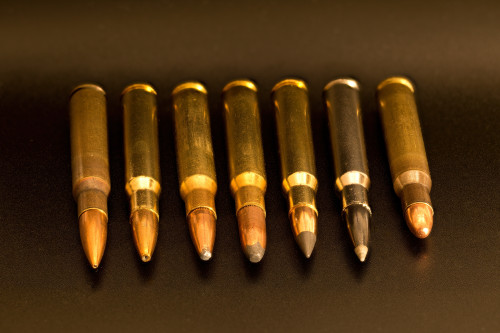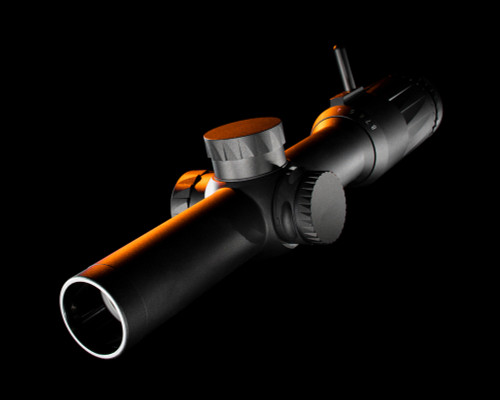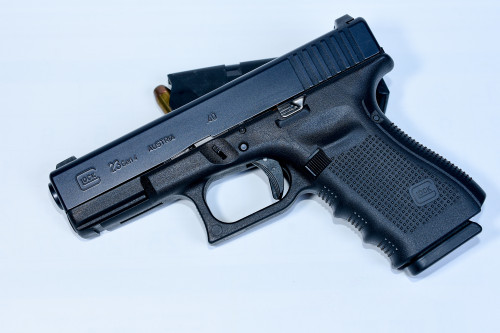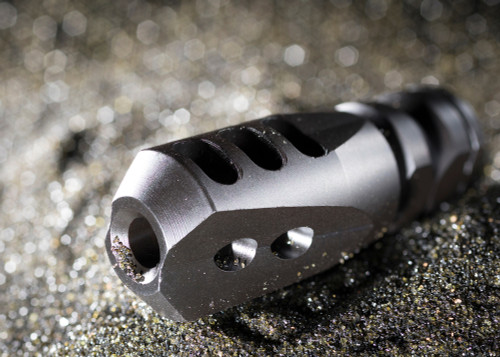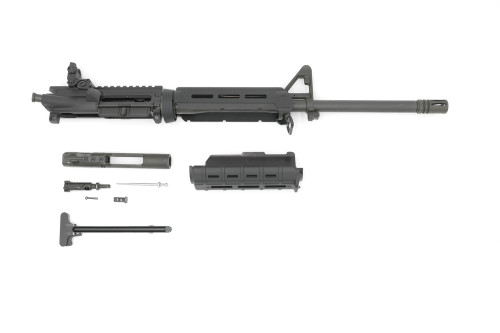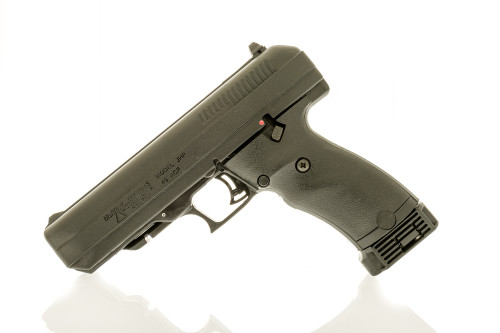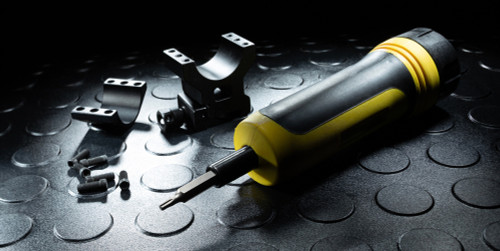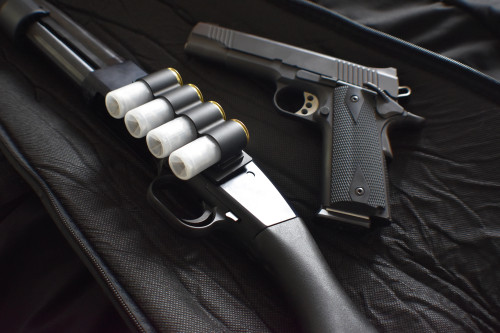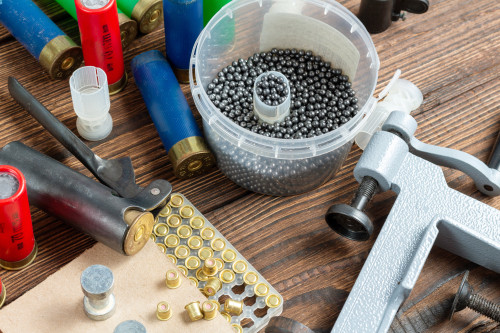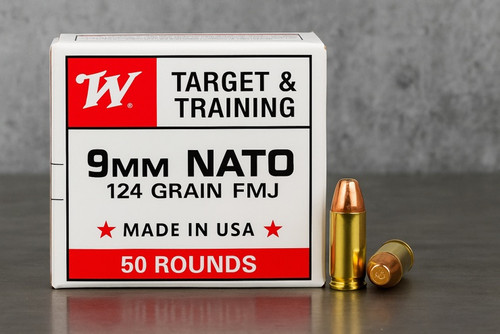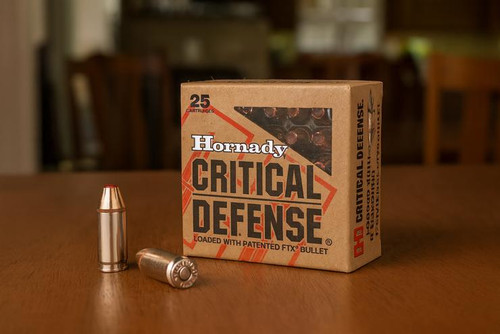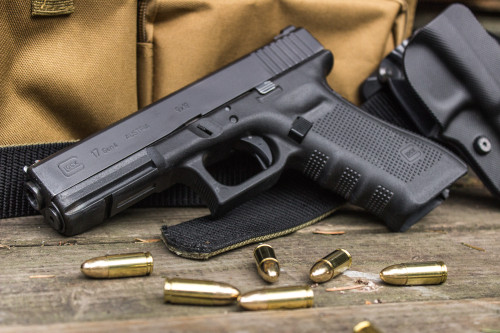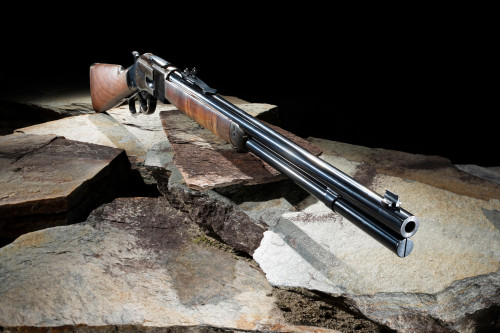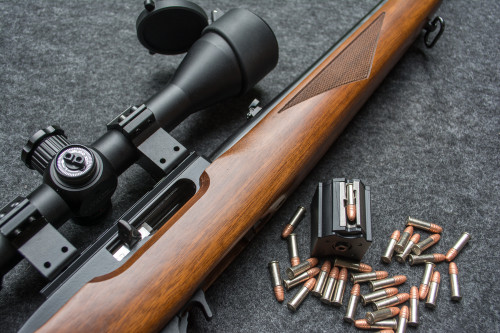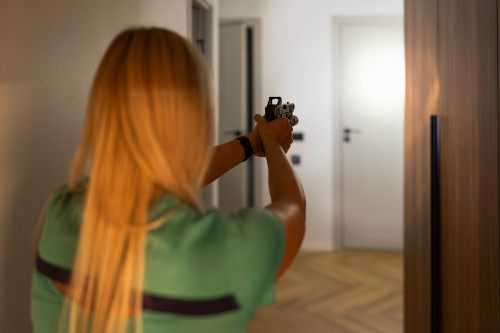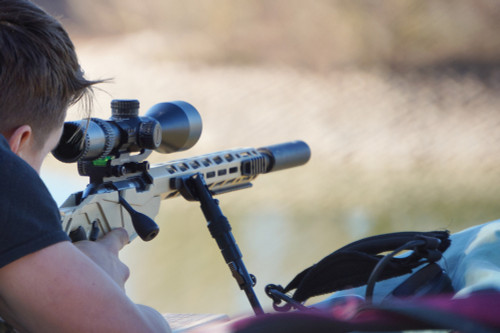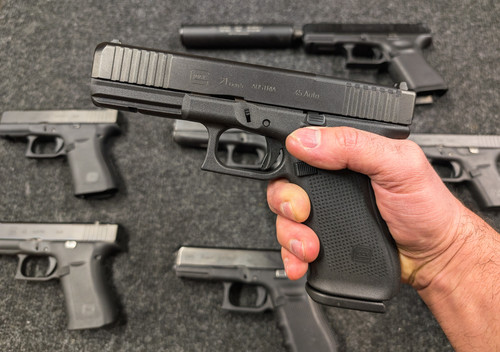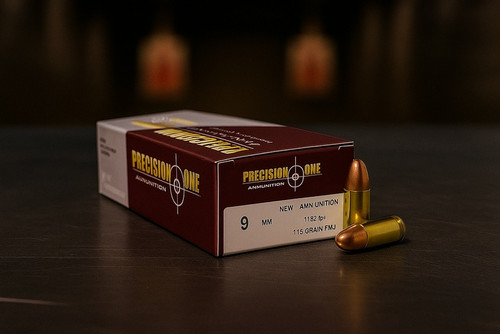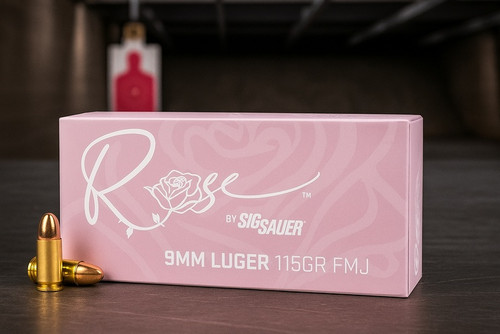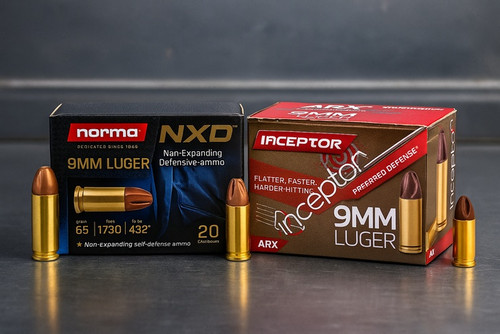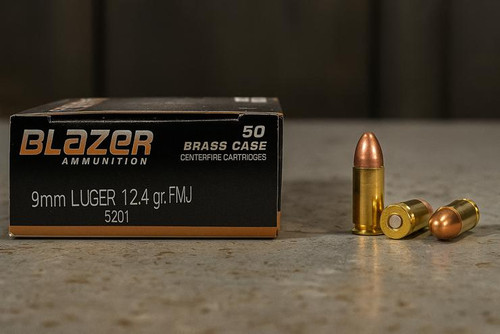The 10mm cartridge has carved a cult following among handgun and hunting enthusiasts for its sheer power, versatility, and storied history. But how does it stack up against other popular handgun calibers like .45 ACP, .40 S&W, 9mm Luger, and .357 Magnum?
In this article, we break down the 10mm’s strengths, how it compares to similar cartridges, and where it shines—or falls short—based on real-world performance.
For a deep dive into the 10mm’s ballistics and how its energy and trajectory compare to other rounds, see our breakdown of 10mm Ballistics and Performance.
What Is the 10mm Cartridge? A Complete Overview
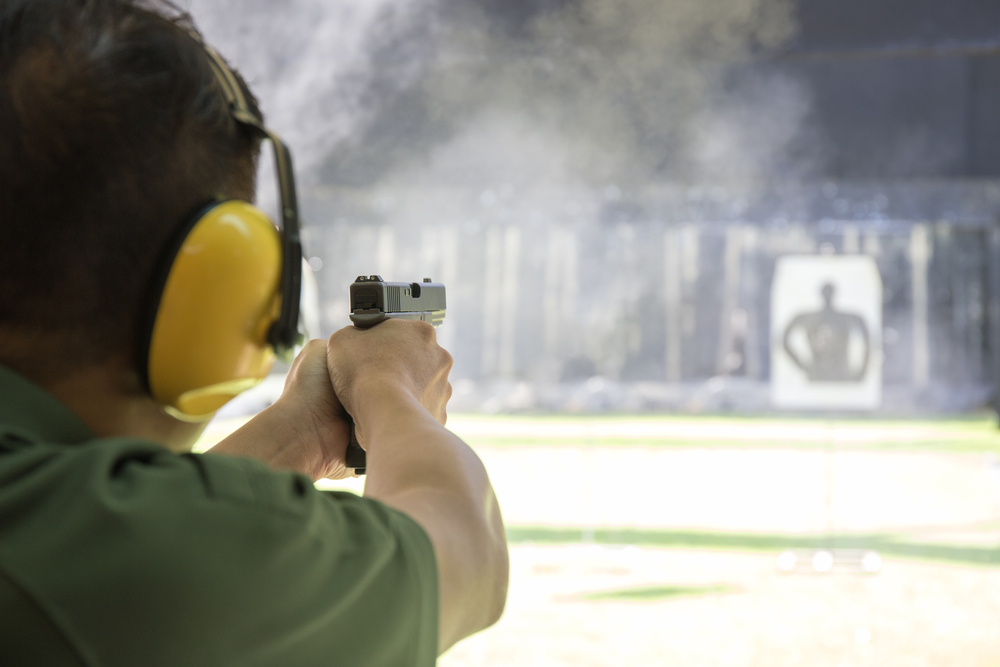
The 10mm is a powerful semi-automatic pistol cartridge originally developed in the early 1980s by firearms visionary Jeff Cooper, in collaboration with Dornaus & Dixon Enterprises. It was introduced as part of the Bren Ten pistol project, with the goal of creating a flat-shooting, hard-hitting round that could outperform existing service calibers like the 9mm and .45 ACP.
Following its debut, the FBI briefly adopted the 10mm after the infamous 1986 Miami shootout exposed the limitations of 9mm and .38 Special revolvers in barrier penetration and terminal performance. The Bureau’s testing confirmed that 10mm offered excellent wound potential, deeper penetration, and high velocity, making it ideal for both duty and tactical use.
However, the downside was recoil and controllability. Full-power 10mm loads proved too much for many agents to manage effectively, especially in training. To address this, lighter “FBI-lite” 10mm loads were developed—but these underpowered variants ultimately led to the creation of the shorter, lower-pressure .40 S&W, which became the agency’s new standard.
Despite its brief stint in law enforcement, the 10mm never disappeared. In fact, its popularity surged among civilian shooters, hunters, and backwoods professionals who appreciated its raw energy and semi-auto format. Over the past decade, 10mm has seen a strong resurgence, with nearly every major handgun manufacturer now offering at least one 10mm model, and ammo makers producing a wide range of loads for defense, hunting, and training.
Basic Ballistic Profile and Specs
The 10mm is a rimless, straight-walled cartridge that delivers some of the highest velocities and energies available from a semi-automatic handgun. Its ballistic performance often overlaps with magnum revolver cartridges, especially in full-power loads. It offers versatility, functioning well across various barrel lengths and supporting a wide range of bullet types—from light, fast defensive hollow points to heavy, deep-penetrating hardcast rounds.
Standard Specifications:
- Bullet Diameter: 0.400"
- Case Length: 0.992"
- Overall Length: 1.260"
- Typical Bullet Weight: 135 to 200 grains (specialty loads up to 220 gr available)
- Typical Velocity: 1,100–1,600+ feet per second (fps), depending on load
- Muzzle Energy: 500–750+ foot-pounds (ft-lbs)
- SAAMI Maximum Pressure: 37,500 psi
These ballistics make the 10mm ideal for roles that require deep penetration, extended range, and stopping power against both human and animal threats.
Real-World Roles and Modern Appeal
Today, the 10mm is widely embraced for a range of specialized roles:
- Hunting: Suitable for medium game like deer, hogs, and even black bear, particularly with hardcast or bonded hollow points.
- Backcountry Defense: A top choice for hikers, anglers, and outdoor professionals in grizzly territory, where reliable penetration is critical.
- Tactical Applications: Used by elite law enforcement units and civilian shooters needing barrier-blind penetration or longer-range terminal performance.
- Concealed Carry (by experienced users): Carried in compact models like the Glock 29 or M&P 10mm Compact, though it requires dedication to training due to recoil.
- Reloading and Custom Loads: Popular with reloaders who value its wide range of pressure-tolerance and performance customization.
Why 10mm Still Matters
In a world dominated by 9mm and .45 ACP, the 10mm continues to stand out as the most powerful mainstream semi-automatic handgun cartridge in general circulation. It offers magnum-like power without sacrificing capacity or the ability to mount optics, suppressors, or lights. For those who need a pistol that performs beyond the limits of traditional defensive calibers—without stepping into revolver territory—the 10mm remains an unmatched option.
Whether you’re heading into the backcountry, carrying for protection, or simply want a pistol that hits with authority, the 10mm has proven itself for over four decades—and it’s only getting better with time.
If you’re evaluating 10mm for self-defense, our comparison of the 5 Best 10mm Ammo Options for Self-Defense highlights tested loads and explains which bullets are optimized for expansion and penetration.
10mm vs .45 ACP: A Practical Breakdown for Power and Purpose
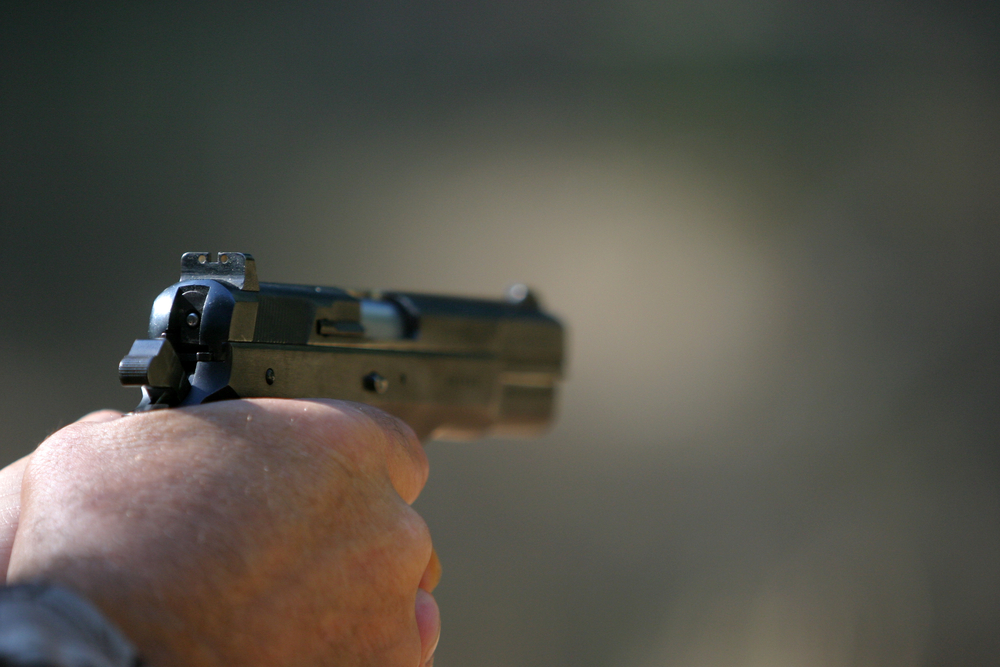
Power and Performance
The .45 ACP (Automatic Colt Pistol) is a legendary cartridge known for its big-bore stopping power at subsonic speeds. It typically fires 185–230 grain bullets at 750–950 fps, generating 350–450 ft-lbs of muzzle energy. It’s a proven performer in defensive roles, offering good expansion and moderate penetration with modern hollow points.
10mm, by comparison, steps into magnum-level territory. Standard loads fire 165–200 grain bullets at 1,200–1,350+ fps, producing 600–750 ft-lbs of energy in high-performance loads. It retains more energy at longer ranges and penetrates better through barriers like auto glass, bone, or thick hide.
10mm delivers nearly twice the energy of .45 ACP in many loadings, making it more suitable for extended-range or hard-target situations.
Recoil and Control
The recoil profile between these two rounds is distinctly different. .45 ACP’s low pressure and subsonic speed create a smooth, rolling recoil often described as a "push" rather than a snap. It’s very manageable in full-size pistols and ideal for shooters who want controllability with big-bore impact.
10mm, on the other hand, produces a sharper, faster recoil impulse. It demands more from the shooter in terms of grip strength and follow-up shot discipline, especially in lighter-framed or compact pistols.
.45 ACP is easier to shoot comfortably and accurately. 10mm requires practice but rewards with higher ballistic performance.
Use Case and Versatility
.45 ACP has been used by military and civilian shooters for over a century. It excels in home defense, target shooting, and suppressed applications due to its naturally subsonic speed and heavy bullet weight. Its wide commercial availability and broad platform support make it a go-to for many.
10mm Auto shines in outdoor, tactical, and hunting roles, where power, penetration, and extended effective range are needed. It’s a preferred sidearm round in bear country, hog hunts, and tactical defense situations where deep penetration may be critical.
.45 ACP is excellent for close-quarters defense and soft-target scenarios. 10mm is built for more demanding, high-impact situations in the field.
Verdict
- Go with .45 ACP if you want smooth recoil, proven stopping power at close range, and compatibility with a wide variety of pistols—especially if suppressed shooting or home defense is your priority.
- Opt for 10mm if you need enhanced penetration, more energy, and flexible use from self-defense to hunting or backwoods carry.
Both calibers offer real-world effectiveness—but 10mm brings more power and versatility, while .45 ACP delivers classic performance in a controllable, user-friendly package.
10mm vs .40 S&W: A Clear-Cut Comparison for Practical Shooters
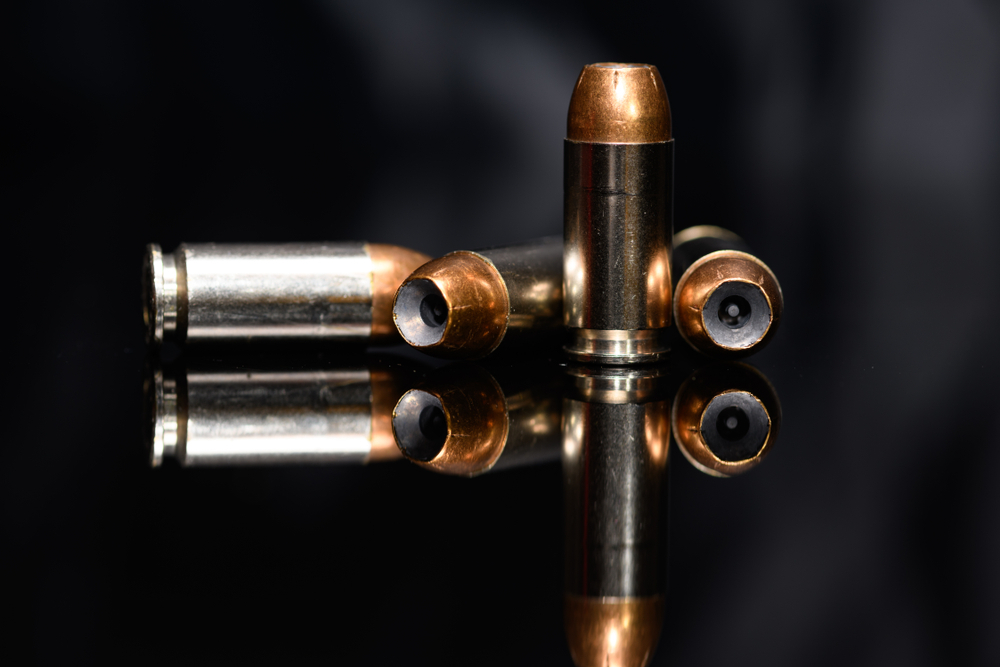
Origins
The .40 S&W (Smith & Wesson) was created in the early 1990s as a direct response to the FBI’s challenges with full-power 10mm. Using the same 0.400" diameter bullet, the .40 S&W case is shortened and loaded to lower pressures, making it better suited for duty-sized pistols and average shooters. The goal was to retain adequate stopping power while reducing recoil and allowing for smaller grip frames.
.40 S&W is the downsized derivative of 10mm, optimized for control and carry, not maximum power.
Ballistics
While both cartridges fire the same diameter projectiles, 10mm produces considerably more energy and velocity—especially in full-power loads. Typical .40 S&W defensive rounds deliver 400–500 ft-lbs of energy, while standard 10mm loads can easily exceed 600–700 ft-lbs, especially with heavier bullets in the 180–200 grain range.
10mm also exhibits superior penetration, flatter trajectories, and more consistent performance at extended distances, which is a key reason it's favored for field applications and dangerous game defense.
10mm outperforms .40 S&W in nearly every ballistic category—but at the cost of greater recoil and larger platforms.
Recoil and Shootability
.40 S&W produces moderate recoil, often described as "snappy" in smaller pistols but manageable with good grip and technique. Its recoil is more pronounced than 9mm but less intense than 10mm, making it a middle ground for shooters seeking more stopping power without the harsh kick of a magnum-level load.
10mm, by contrast, has sharp and fast recoil, especially in compact pistols or lightweight platforms. It demands a firmer grip, more deliberate follow-up shots, and greater recoil control overall.
.40 S&W is easier to shoot quickly and accurately under stress. 10mm rewards more advanced shooters who can control its punch.
Use Case and Practicality
In a law enforcement or civilian carry context, .40 S&W shines in compact and mid-size pistols with manageable recoil and solid terminal ballistics. It's widely available and has proven effective in real-world defensive scenarios.
However, 10mm is the superior tool for backwoods carry, handgun hunting, and barrier penetration, offering significant advantages in power and flexibility for those who train with it.
.40 S&W is built for duty and EDC; 10mm is built for the field, the hunt, and high-threat environments.
Verdict
- Choose .40 S&W if you want manageable recoil in a proven self-defense cartridge, with wide firearm availability and solid performance in everyday carry situations.
- Choose 10mm if you need a versatile powerhouse capable of stopping threats in both urban and wilderness settings—and you're comfortable handling its more aggressive recoil.
Both calibers have their place. .40 S&W is the practical solution for compact firepower. 10mm Auto is the performance-driven choice for shooters who demand more from their sidearm.
10mm vs 9mm Luger: A Practical Look at Two Popular Calibers
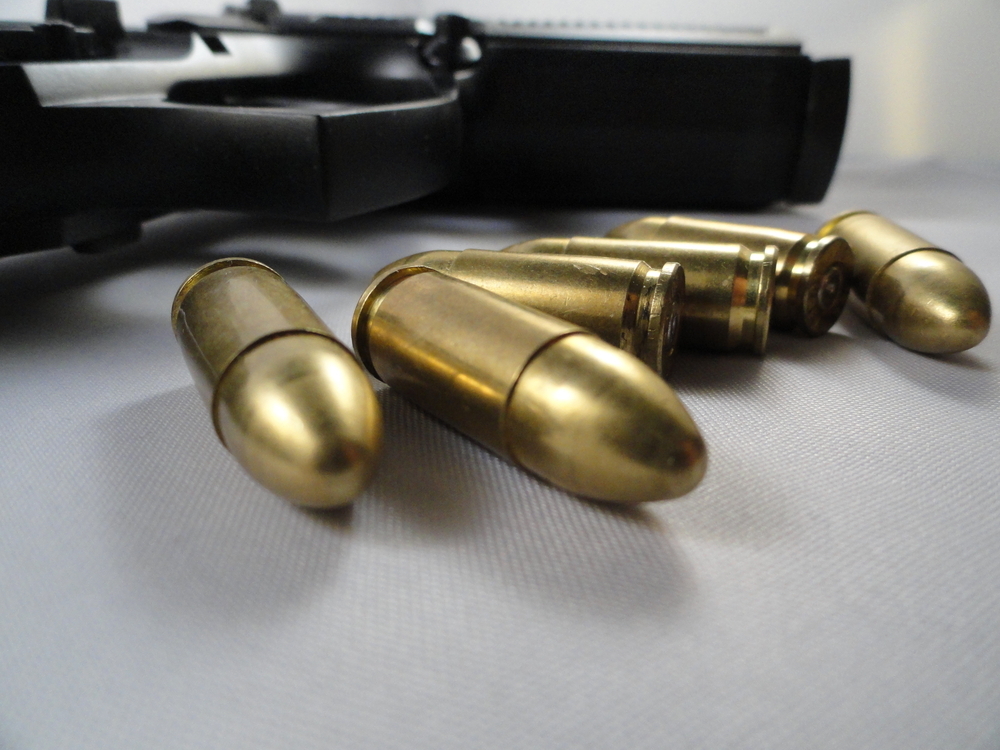
Ballistics
The difference in ballistic performance between 10mm Auto and 9mm Luger is significant. The 9mm Luger, the world’s most popular defensive handgun caliber, typically fires 115- to 147-grain bullets at velocities ranging from 1,000 to 1,150 fps, producing 350–400 ft-lbs of muzzle energy in standard pressure loads.
In contrast, the 10mm Auto regularly fires 165- to 200-grain bullets at 1,200 to 1,350+ fps, with muzzle energies often exceeding 600 ft-lbs, and reaching 700+ ft-lbs with full-power or hunting loads. It also retains more energy downrange, making it better suited for penetration through barriers or thick-skinned animals.
10mm is clearly superior in raw energy, penetration, and range potential. It’s more capable in wilderness, tactical, or hunting applications, while 9mm offers "good enough" ballistics for most personal defense needs.
Capacity and Cost
Most standard-size 9mm pistols—like the Glock 17 or SIG P320—carry 15 to 17+1 rounds, while full-size 10mm pistols like the Glock 20 typically hold 15+1 rounds, though compact 10mm models often drop to 10+1 or fewer.
When it comes to cost, 9mm is far more affordable and available, with a wide variety of target and defensive loads on the market. Bulk pricing on 9mm can often be less than half the price of 10mm. In contrast, 10mm ammo is more niche, and full-power defensive or hunting loads from boutique manufacturers are notably more expensive.
9mm wins for higher capacity and lower cost, making it ideal for high-volume practice, training, and concealed carry.
Recoil
Recoil is where these two calibers really diverge in user experience. 9mm produces low to moderate recoil, depending on the firearm’s weight and barrel length. This makes it easy to shoot accurately and rapidly—even for beginners or those with smaller hands.
10mm, on the other hand, produces sharp, fast recoil that requires more grip strength and recoil management skills. In smaller-framed pistols, the recoil can be snappy and fatiguing over time. That said, full-size handguns with good ergonomics can help tame it.
9mm is extremely manageable for all skill levels. 10mm is best for experienced shooters who prioritize power and can handle increased recoil.
Verdict
If your primary needs are self-defense, ease of use, and affordability, 9mm is the better all-around choice. It’s the most widely used defensive caliber for a reason—mild recoil, good terminal performance with modern ammo, and low cost.
If you need a handgun for defense against larger threats, hunting, or just want more power in a semi-auto format, the 10mm Auto clearly dominates in performance. It delivers magnum-level force while retaining semi-auto capacity and speed, but demands more from the shooter in terms of cost, recoil control, and platform size.
Bottom line:
- Choose 9mm for everyday carry, training, and cost-effective defense.
- Choose 10mm for maximum power, outdoor carry, and versatile performance in challenging environments.
10mm vs .357 Magnum: A Simple Comparison of Power and Platforms
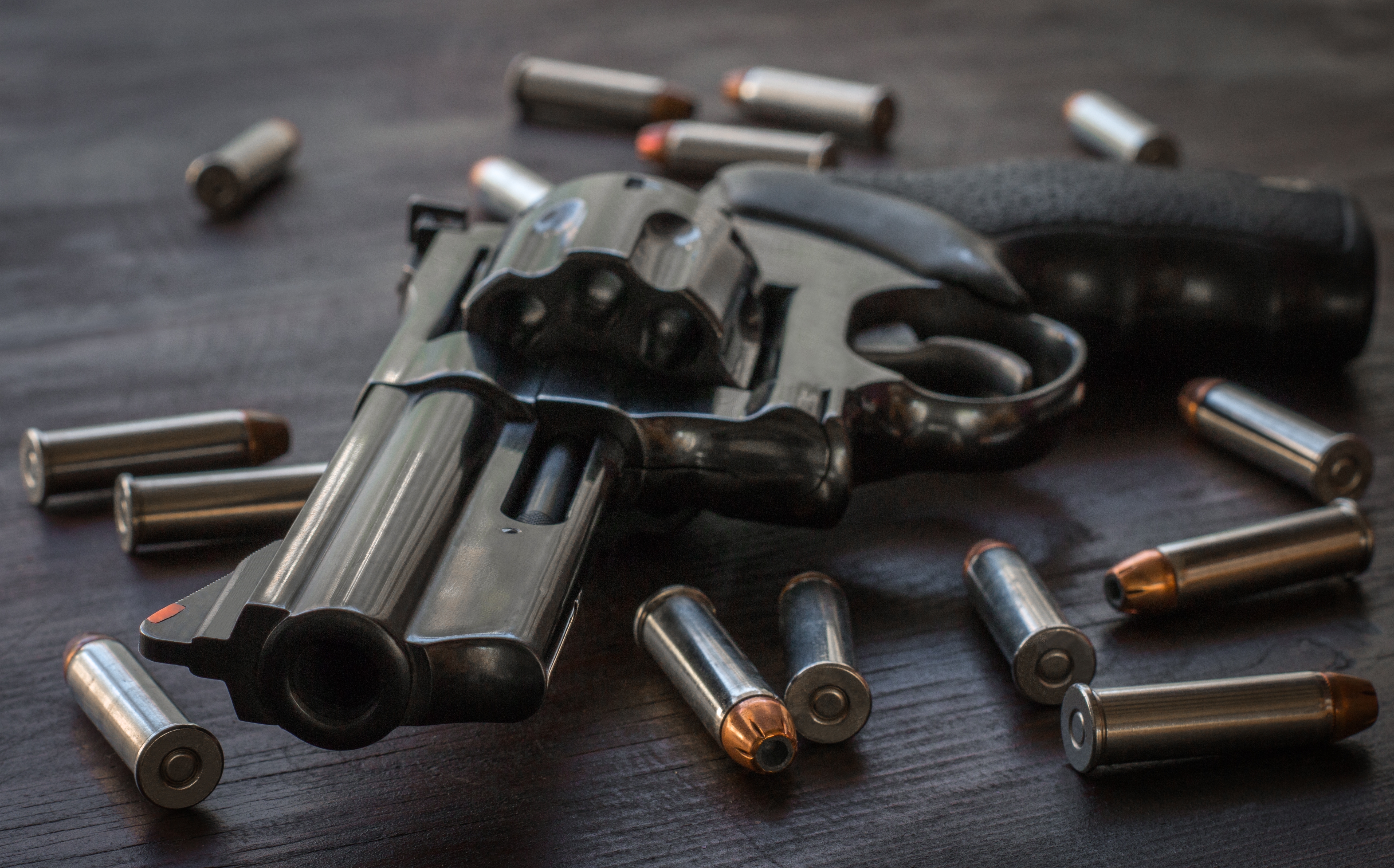
Ballistics
Both the 10mm and the .357 Magnum are high-powered handgun cartridges capable of exceeding 600 ft-lbs of muzzle energy, depending on bullet weight and barrel length. The .357 Magnum typically fires 125–158 grain bullets at 1,300–1,600 fps, offering exceptional velocity and penetration—especially with lighter loads.
10mm operates in a similar energy range, but performs better with heavier bullets (180–200 grains), delivering consistent energy and deeper momentum at close to equal or slightly lower velocities. When fired from longer-barreled pistols, full-power 10mm loads can match or exceed .357 Magnum in terminal performance.
.357 Magnum wins in sheer velocity with light bullets; 10mm delivers comparable energy with heavier projectiles and better momentum transfer.
Platform Differences
The .357 Magnum is almost exclusively found in revolvers, which offer unmatched mechanical reliability and simplicity. However, revolvers are slower to reload, limited in capacity (usually 5–7 rounds), and lack the modularity of modern semi-autos.
10mm is chambered in a growing number of semi-automatic pistols, which offer faster reloads, larger magazine capacities (10–15+ rounds), compatibility with red dot sights, weapon lights, threaded barrels, and easier integration into modern defensive or tactical setups.
.357 Magnum is best suited to those who value rugged simplicity. 10mm is ideal for shooters who prefer modern ergonomics and rapid response capability.
Versatility
.357 Magnum revolvers can also fire .38 Special, making them excellent for training, recoil-sensitive shooters, or low-cost practice. This dual-caliber compatibility is a major strength in terms of ammo flexibility.
10mm pistols offer a similar advantage in that many models can be converted to .40 S&W with a simple barrel swap, allowing for more affordable range sessions or softer recoil in defensive training.
Additionally, 10mm’s semi-auto platforms are often more customizable, supporting optics, extended magazines, and suppressors—advantages revolvers generally lack.
Both calibers offer versatility, but in different forms—dual-caliber revolvers for .357 Magnum, and modular, optics-ready platforms for 10mm.
Verdict
- Choose .357 Magnum if you value mechanical reliability, flexible ammo choices, and revolver simplicity. It's an outstanding option for those who want a low-maintenance, hard-hitting sidearm.
- Choose 10mm if you want semi-auto speed, higher capacity, and modern tactical features, with equal stopping power and better compatibility for field or defensive roles.
In essence, .357 Magnum represents classic magnum performance in a rugged wheelgun, while 10mm brings that same power into the modern era—with speed, capacity, and accessories to match.
10mm vs .41 Magnum: A Straightforward Comparison
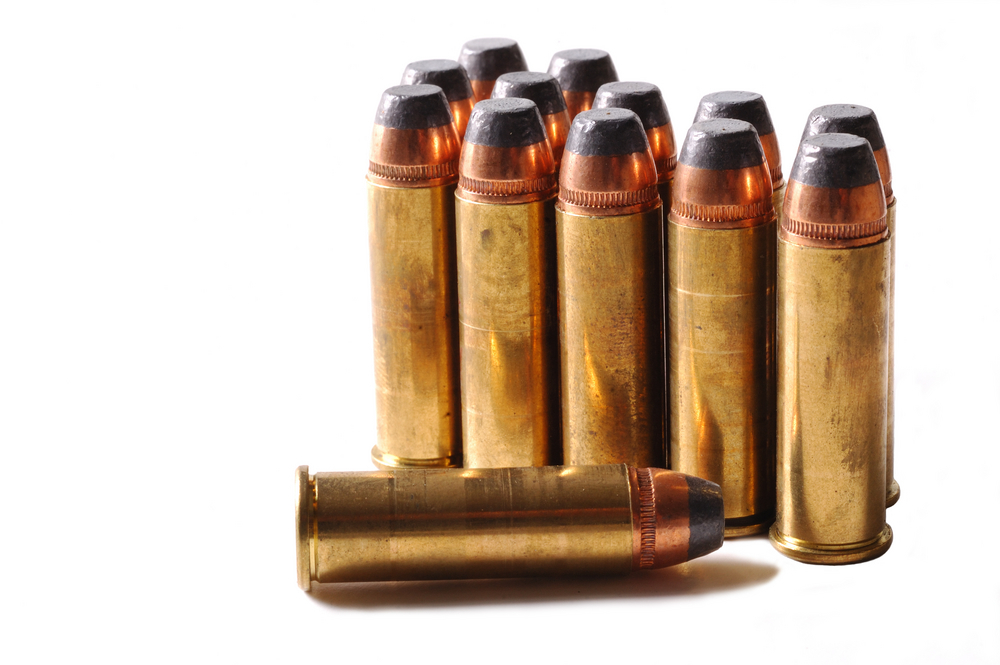
Ballistics and Role
The .41 Magnum was introduced in the 1960s as a revolver cartridge designed to sit between the .357 Magnum and .44 Magnum in terms of power. It typically fires 210–220 grain bullets at 1,200–1,400 fps, generating up to 800–1,000 ft-lbs of muzzle energy—making it a potent option for hunting medium to large game or backcountry defense.
10mm, while generally less powerful, isn’t far behind. Full-power loads can produce 600–750 ft-lbs of energy with 180–200 grain bullets, offering impressive penetration and stopping power, particularly in hunting and outdoor defense roles.
.41 Magnum has a ballistic edge in raw power, but 10mm comes surprisingly close—especially given its smaller case and lower recoil in semi-auto platforms.
Practicality and Platform Availability
.41 Magnum is strictly a revolver cartridge, and relatively few modern firearms are chambered for it. Popular models tend to be large-frame revolvers from Ruger or Smith & Wesson, which are excellent for hunting but heavy and slow to reload.
In contrast, 10mm is widely available in semi-automatic pistols from brands like Glock, SIG Sauer, Springfield Armory, and Smith & Wesson. These platforms support optics, lights, threaded barrels, and extended magazines, making them far more adaptable to different shooting roles—from hunting to tactical use.
Ammo availability is also a major difference: .41 Magnum is harder to find and more expensive, while 10mm—though not as common as 9mm—is increasingly supported with both defensive and hunting loads from mainstream and boutique manufacturers.
10mm is more accessible, both in firearm options and ammunition availability, making it the more practical choice for most shooters.
Use Case and Shooter Appeal
.41 Magnum appeals to revolver enthusiasts, handgun hunters, and those who appreciate the simplicity and power of traditional magnum cartridges. It’s a specialized tool, highly effective in its niche, but less adaptable outside of it.
10mm, on the other hand, caters to modern shooters who want magnum-level performance in a faster, more customizable platform. It’s especially attractive to outdoorsmen, backwoods carriers, and tactical shooters who want versatility without sacrificing stopping power.
.41 Magnum is best for dedicated revolver users. 10mm is better suited to shooters looking for a balance of power, modern features, and broader utility.
Verdict
- Pick .41 Magnum if you're a revolver purist seeking top-tier stopping power for hunting or trail defense and don’t mind limited firearm and ammo availability.
- Go with 10mm if you want modern performance with magnum-class ballistics, faster reloads, and a wider selection of pistols, gear, and ammunition.
In short, .41 Magnum may hit harder, but 10mm wins in practicality, versatility, and real-world usability—offering nearly the same power in a much more accessible, semi-auto package.
Best Use Cases for 10mm
- Defense in bear country or wilderness environments
- Hunting medium game like deer or feral hogs
- Tactical applications with full-size pistols
- Carrying in remote areas where 9mm may be underpowered
- Reloaders seeking wide performance ranges (mild to magnum)
Drawbacks of the 10mm
- Higher recoil, especially for newer shooters
- Ammunition is often expensive and less common than 9mm or .45 ACP
- Most 10mm pistols are full-sized and may not be optimal for concealed carry
Real-World Shooter Feedback
The following observations reflect typical shooter experiences collected from forums, reviews, and interviews:
Hunters and Outdoorsmen
Shooters using 10mm for bear country or hog hunting frequently praise its stopping power. Hardcast loads, especially in 200-grain or higher, are reported to be extremely effective against tough-skinned or bone-dense game.
Tactical Trainers
In law enforcement circles, some trainers appreciate the 10mm for its ability to penetrate intermediate barriers, but note that it's usually relegated to special use due to its recoil in rapid fire.
Concealed Carriers
Many who carry compact 10mm pistols (like the Glock 29) say the recoil is noticeable but manageable with proper grip and training. They also note confidence in its stopping power, especially for rural or trail carry.
Reloaders and Enthusiasts
Reloaders value the 10mm’s versatility. Many create mild range loads for training and reserve hot loads for defense or hunting—maximizing performance across multiple roles.
Disclaimer: All technical comparisons and shooter feedback are based on independent research, published ballistic data, and publicly available user experiences. Individual performance may vary based on firearm, ammunition, barrel length, and personal skill. Always consult professionals and conduct safe, responsible testing with your chosen setup.
The Bottom Line on 10mm
The 10mm stands alone as a powerful and flexible cartridge capable of performing across multiple roles. It’s not just another pistol caliber—it’s a semi-automatic powerhouse that encroaches on magnum revolver territory while offering faster reloads, higher capacity, and modern firearm compatibility.
For practical range loads and comparison data when testing recoil and follow-up shots, see Best 10mm Ammo for Range Use.
Where .45 ACP and .40 S&W prioritize manageability and familiarity, 10mm breaks away with bold, high-pressure energy. Compared to 9mm, it delivers over twice the muzzle energy and deeper penetration. Against .357 Magnum and even .41 Magnum, it performs on par in most scenarios—but in a more adaptable, semi-automatic platform.
The 10mm may not be the right choice for beginners, casual plinkers, or those with limited access to ammo. But for confident shooters seeking a caliber that delivers more than just "adequate" terminal performance—especially in defensive or wilderness applications—the 10mm remains one of the most capable, rewarding cartridges you can carry in a pistol.
Whether you're a reloader chasing ballistic excellence or a backcountry traveler who needs a sidearm with real punch, the 10mm Auto is more than up to the task.
Frequently Asked Questions (FAQs)
Is 10mm a good choice for self-defense?
Yes—particularly in full-size pistols where recoil is more manageable. Look for self-defense loads that balance power and control, such as 165–180 grain hollow points.
Can 10mm be used for bear defense?
Yes, when paired with the right hardcast or deep-penetrating loads. It's a common choice in Alaska and mountain regions where animal encounters are possible.
Is 10mm suitable for concealed carry?
It's possible, especially with compact models like the Glock 29 or SIG P320 XTen Compact. That said, most 10mm pistols are large and recoil-heavy compared to 9mm or .40 S&W.
Why did the FBI stop using the 10mm?
Agents found the recoil too difficult to manage, and the large-frame pistols required to house the cartridge were not ideal for general issue. This led to the development of the more manageable .40 S&W.
What’s the best 10mm pistol on the market today?
Top choices include the Glock 20 (full-size), SIG Sauer P320 XTen, Springfield XD-M Elite 10mm, Smith & Wesson M&P 10mm M2.0, and several high-end 1911 variants from Colt, Dan Wesson, and others.



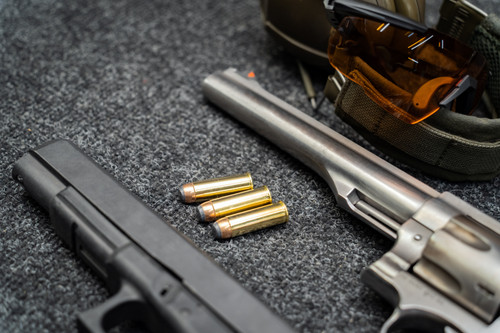
 Pro Armory Editorial Team
Pro Armory Editorial Team